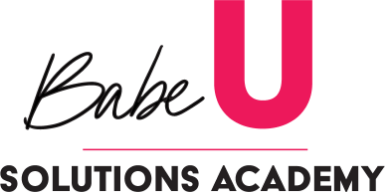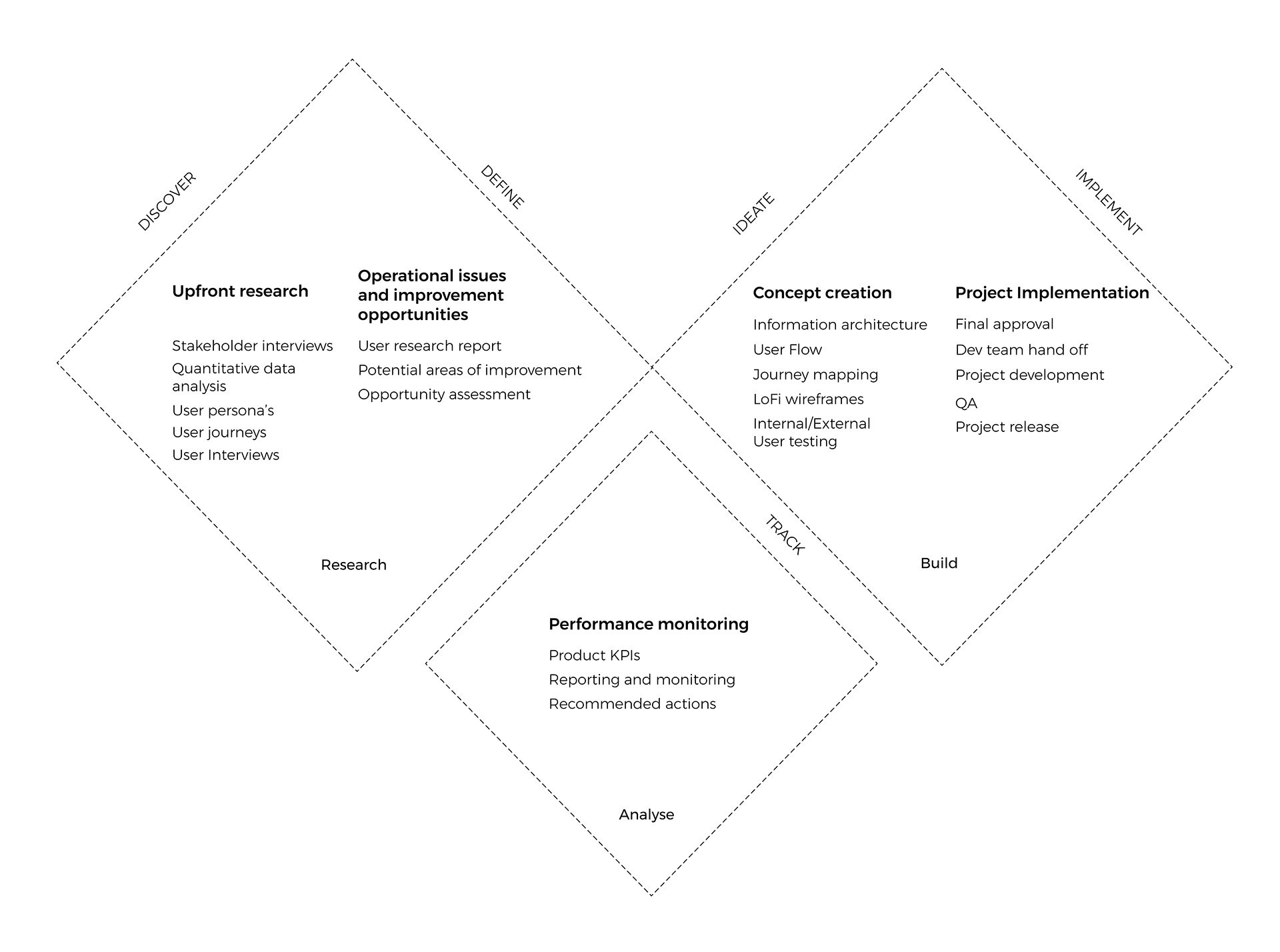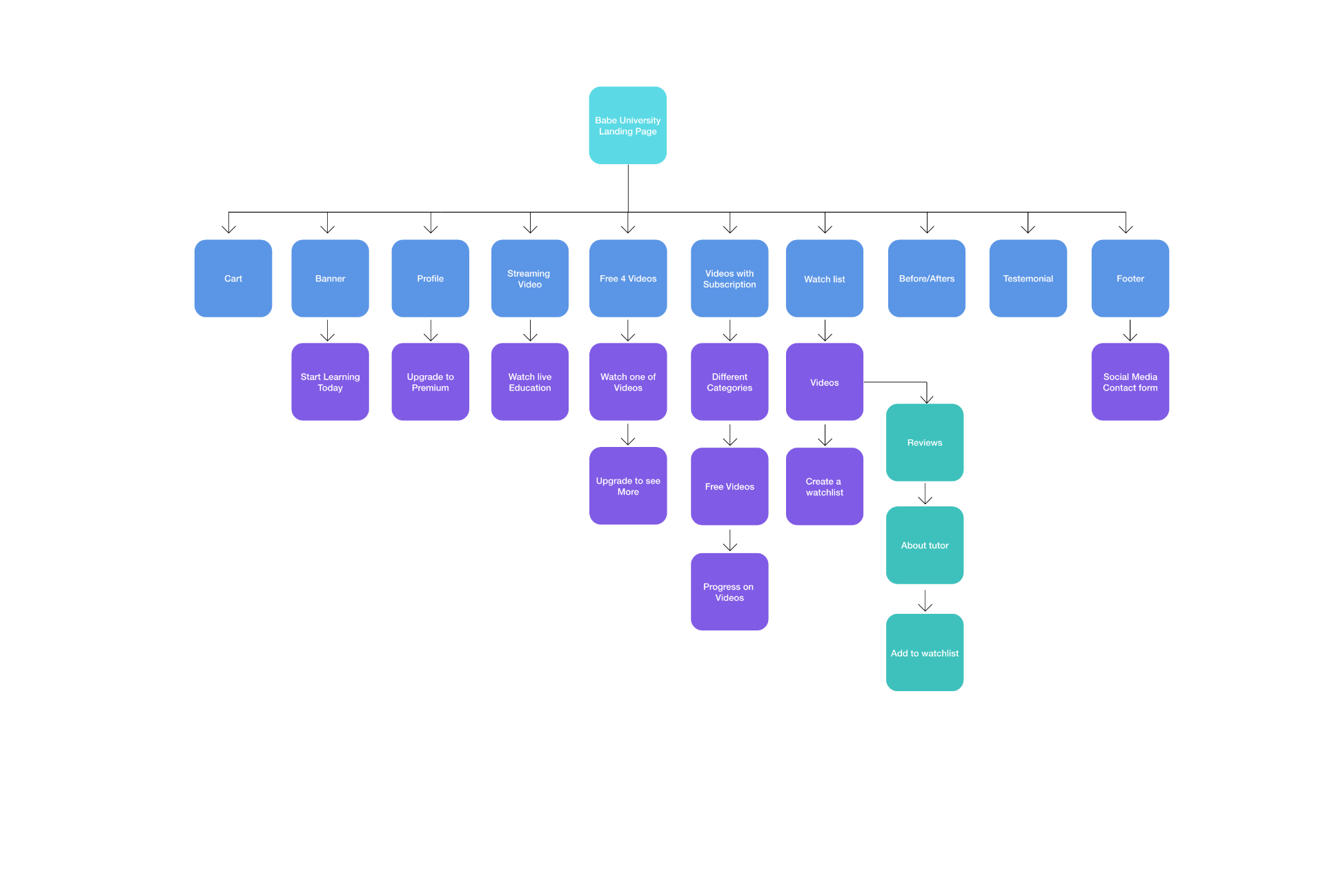
My Role
UX/UI Designer
Job Summary
As a product designer of BabeU Solutions Academy (one of the BIG brands), I went through the entire design process starting with upfront research and all the way to the project launch. I worked closely with core brand stakeholders and directors, marketers, and developers to build a robust experience for people who strive to become professionals in hair styling.
Challenge
The project of BabeU Solutions Academy was set to solve multiple constraints of in-person courses. The 3 major blockers of in-person courses were:
1. Flexibility
Online education offers a flexible schedule that allows students to learn at their own pace and on their own schedule, which can be especially beneficial for working adults and people with other responsibilities.
2. Accessibility
Online education can make education more accessible to people who may not be able to attend in-person courses.
3. Scalability
Online education can reach a larger number of students than traditional in-person education, which can help to meet the brand's growth goals
.Hypothesis
Easy-to-use online education platform = Growth of the online education component
An online education portal that is clear, efficient, and easy to use will provide growth for a brand's education component mainly through the elimination of constraints of in-person education such as accessibility, flexibility, and scalability.
Engaging and interactive design for online education can make the learning experience more interesting and effective. This can include the use of videos, animations, simulations, and interactive quizzes, which can increase student engagement and retention.
Process

Defining and understanding a problem
The first step in identifying the feature set and the scope of work was stakeholder interviews. Based on this qualitative research I was able to get a vision and expected results from a business standpoint. The user research covered the needs and wants of professional hair stylists in terms of education. The user personas helped a lot to understand our target audience, their behavior, and demographics.
My upfront research covered:
- Feature set to be included in this component based on the business vision;
- Business goals and expectations from this project;
- Target audience.
Understanding "WHO"
Non-hair stylists - people who want to get started in hair styling and hair extensions and have none or little experience;
Professionals - people who want to increase their qualifications by learning new skills or elevate their careers by learning how to expand in the hair business;
Cosmetology students - people who are studying hair styling can benefit from an online hair extensions education program as it can provide them with additional skills and knowledge that they can use in their future careers;
Entrepreneurs - people who want to start a business in the hair extensions industry can benefit from an online hair extensions education program as it can provide them with the knowledge and skills they need to succeed in the industry.
Business needs
1. Offer a new revenue stream: By offering an online hair extension education program, businesses can create a new revenue stream and generate additional income.
2. Expand customer base: By offering an online hair extension education program, businesses can attract a wider range of customers, including hair stylists, cosmetology students, entrepreneurs, and hair extension enthusiasts.
3. Increase brand awareness: By offering an online hair extension education program, businesses can increase brand awareness and establish themselves as reputable and reliable source of hair extension education.
4. Enhance the reputation of the business: By offering an online hair extension education program, businesses can enhance their reputation by being seen as a business that is committed to educating their customers and providing them with the knowledge and skills they need to succeed in the hair extension industry.
User needs
1. Convenience: Users can access the education program from anywhere, at any time, which can be convenient for busy individuals who are unable to attend traditional, in-person classes.
2. Flexibility: Users can learn at their own pace, which can be beneficial for individuals who have busy schedules or who have difficulty learning in a traditional classroom setting.
3. Variety of course material: Users can access a variety of course material, such as videos, interactive quizzes, and written materials, which can be beneficial for individuals who have different learning styles.
4. Stay updated with new techniques: Users can stay updated with new techniques and trends in hair extensions as the curriculum can be regularly updated.
Creating concept
Information Architecture
The purpose of information architecture in online education is to create an intuitive and user-friendly structure for the educational content and resources that are available on the platform. Information architecture plays a critical role in helping users easily find and access the information they need, which can improve the overall learning experience and increase engagement and retention.

User flow
The purpose of user flow in online education is to guide users through the platform in a logical and efficient manner, ensuring that they can easily find and access the educational content and resources they need. User flow helps to improve the overall learning experience by making it easy for users to navigate the platform and find the information they need.
Wireframing the solution
The purpose of low-fidelity (lo-fi) wireframes in online education is to quickly and cheaply create a visual representation of the layout, structure, and content of the online education platform. They are used to test and validate the overall design concept and user flow, before moving on to more detailed and polished designs.
The purpose of high-fidelity (hi-fi) wireframes in online education is to create a detailed and polished representation of the layout, structure, and content of the online education platform. They are used to test and validate the overall design concept and user flow, and to provide a detailed representation of the final product.
Prototype
The purpose of a prototype in online education is to provide a working model of the online education platform, which can be used to test and validate the overall design concept and user flow, and to provide a detailed representation of the final product.